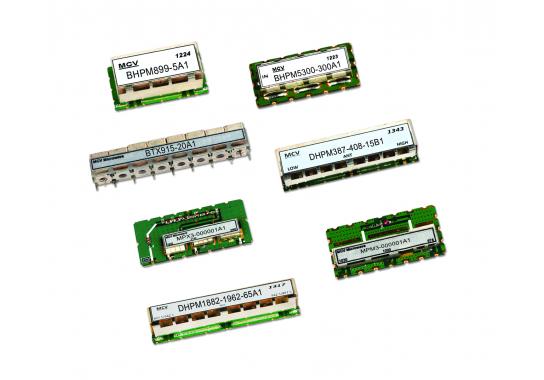Ceramic Filters
MCV Ceramic Filters feature high Q – low loss filters, small size as well as both SMT and connectorized designs using discrete resonators and monoblock ceramic covering the frequency range from 300 MHz to 10 GHz. MCV’s ceramic filter line includes band pass filters, band reject filters, low pass filters, high pass filters, duplexers and multiplexers.
MCV Made in America ceramic monoblock filters, ceramic waveguide filters can handle higher power applications comparable to cavity filters. MCV ceramic planar filters are used in X, K and Ka band applications. MCV monoblock and ceramic waveguide filters are an economical option at much smaller size compared to cavity filters suitable for 5G MIMO base station, DAS and drone applications.
Waveguide filters
MCV offers 5G waveguide filters to reject terrestrial interference in C-Band and can be easily installed between the feed and an LNB. These filters eliminate interference from 5G and virtually any other potential source of out-of-band emissions.MCV coaxial to waveguide adaptors are suitable for using these waveguide filters in 50 ohm coaxial transmission line and testing.
We can design your ceramic filter
Our experienced design team, with over 100 years of combined experience, and power design tools make our design and prototyping fast and accurate.
Please send us your ceramic filter requirements today, and we will have a ceramic filter design and quote back to you very quickly.

FAQ about Ceramic Filters
What is a ceramic filter and how does it work?
A ceramic filter is an RF filter that uses dielectric ceramic resonators to allow or block specific frequencies. These filters operate based on mechanical vibrations within the ceramic material and are commonly used in narrowband applications.
What are the main advantages of ceramic filters?
Ceramic filters are compact, cost-effective, and offer good frequency stability and selectivity. They’re ideal for applications where space is limited and moderate performance is sufficient, such as in handheld devices, radios, and communication modules.
In what frequency ranges are ceramic filters typically used?
Ceramic filters are commonly used in the 10 MHz to 2 GHz range, depending on the specific design. They are especially popular in the VHF and UHF bands.
What are the limitations of ceramic filters?
Ceramic filters have lower power handling than cavity filters, can be sensitive to temperature variations, and may exhibit higher insertion loss in some configurations. They are generally not suited for very high-power or high-precision applications
Where are ceramic filters commonly used?
They are widely used in consumer electronics, mobile communication devices, GPS receivers, two-way radios, and other compact RF systems where size, cost, and reliability are important.
How can I order ceramic filters from MCV Microwave?
To place an order for ceramic filters please contact us and we will help you!